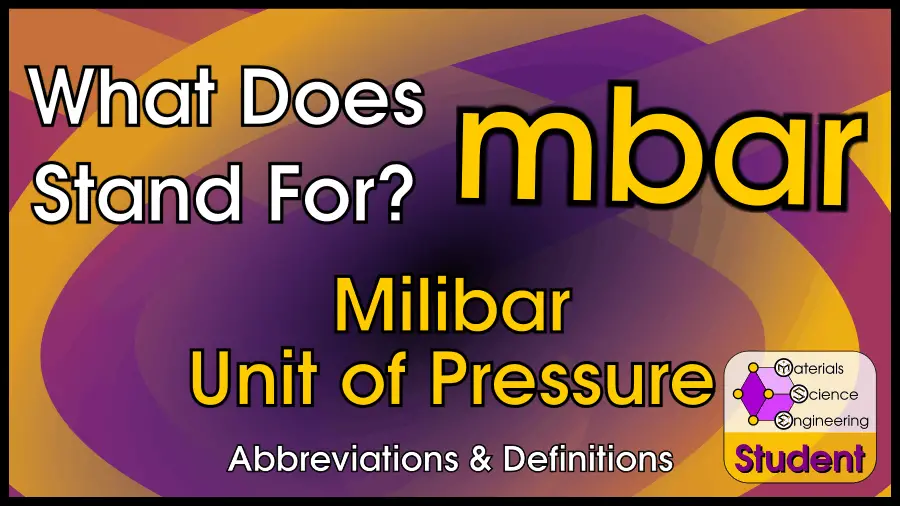
Although the mbar is a detestable unit and you should not be ashamed if you don’t know what it is, unfortunately, the unit is still used today. I frequently use an arc melter (VAR) that uses mbar to measure the vacuum.
The symbol mbar stands for millibar, or one one-thousandth of a bar. The bar is a metric, but non-SI unit of pressure. The bar is equal to 100,000 Pa, so the mbar is equal to 100 Pa.
In my opinion (and the opinion of committees dedicated to systems of measurement), there is absolutely no need for the bar or mbar, because it is the same as Pa but with a different power of 10.
The bar is most-often used as a unit of pressure in meteorology, or weather forecasting.
The mbar is a convenient unit of measurement for weather of its size. Luckily, because of pressure to remove the bar, some meteorologists now use hPa, or hectopascals, which is equal to 1 mbar.
1 mbar = 0.001 bar = 100 Pa = 1 hPa
The bar’s origin is the Greek word for weight, baros.
This article was a definition of mbar. If you are interested in all the different, strange units that are used to measure pressure, I wrote an entire article explaining what each unit is, and how to convert between them. Or, if there is a unit you are especially interested in, you can check out one of the other unit definitions I’ve written.
Other Pressure Measurements:
Pa
Torr
atm
at
psi or ksi
mmHg
Ba
pz